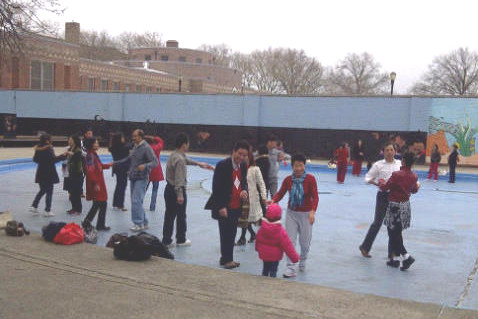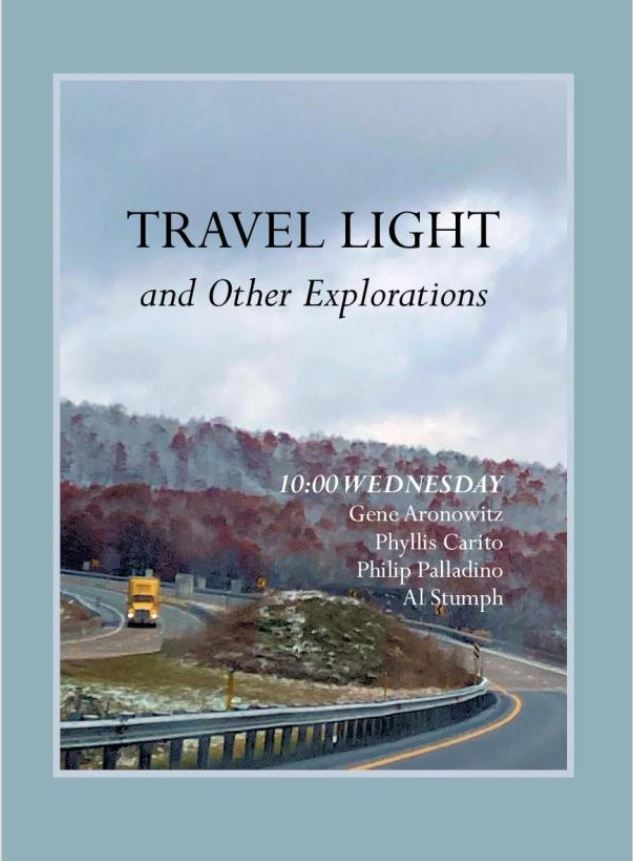Virtual Travel
By Gene Aronowitz
When I was in my late sixties, the erosion of both of my knees put a stop to my frequent travel adventures.
My first wife, Judi, and I went to Canada on our honeymoon in my mid-twenties. Two years later, we drove a figure 8 around the United States, starting in Louisville, Kentucky, touching both the east and west coasts before arriving, two months later, in Chicago, where I had accepted a new position. Within the following five years, foreign travel included Mexico, France, Germany, and Italy.
Linda, my second wife, and I went to Spain on our honeymoon and subsequently to England, Austria, Czechoslovakia, France, Italy, Holland, Germany, and Denmark, the latter two countries to trace some of Linda’s roots.
Eventually, my femurs and tibias, with hardly any cartilage left, rubbed together like grain-grinding stones at a gristmill, making travel undesirable. Standing in line at airports for security or tickets was tiring. Lugging our luggage to a hotel was excruciating. Sightseeing was appalling. Sitting for prolonged periods in an airplane, train, tour bus, or restaurant left me walking like Frankenstein’s monster when I stood up.
I had been going to an orthopedist whose annoying steroid shots made little difference, but he advised against getting knee replacements until, as he put it, I “really needed them.” That was his way of saying that I should wait until I was indeed incapacitated and not just inconvenienced. I was discouraged but yielded to his supposedly superior knowledge. Eventually, I decided it was a lifestyle issue and had both knees replaced, but that was not until much later. Before that, I saw travel as not worth the emotional and physical costs I incurred.
One day, in 2012, Linda visited her friend and co-worker Marilyn, who was planning to tour China, and asked Linda if she would be interested. Linda thought it would be fun to see the country and spend time with her friend. But she was influenced by my cautiousness about travel and her own antipathy toward airports. She decided she didn’t want to go but was interested in expanding the cultural awareness she might have experienced on the trip. She wondered how much she could learn about China while Marilyn was away and asked if I wanted to join her in discovering that country virtually. I agreed.
We didn’t have to go far to experience one aspect of Chinese culture, their involvement in communal exercises. Linda and I frequently went to a nearby park in Brooklyn to do Tai Chi. Every morning, hundreds of Chinese Americans assembled there for various forms of exercise, including Tai Chi, Qi Gong, group calisthenics, and even ballroom dancing. It had never occurred to me that slow dancing could be considered a form of exercise.

Sunset Park, our Brooklyn neighborhood, included a large Chinatown, almost twice the size of its more famous cousin in Manhattan. The businesses were concentrated along Eighth Avenue, presumably because the number eight in Chinese folklore is considered lucky for financial matters. Others claim that the undulating shape of the hilly Eighth Avenue topography resembles a dragon, mythologically considered a symbol of power in China.
Dotting Eighth Avenue were numerous Chinese food markets where we could obtain the proper provisions for preparing delicious Chinese meals at home. There was also a shop where I could get fresh noodles, which I used to make my specialty, the best cold sesame noodles in the world, which I can assure you, is not hyperbole. It takes me four days to prepare this delicacy.
Pacificana, a restaurant in Sunset Park, is considered one of the best Chinese restaurants in New York City, and we ate there often, including breakfasts of Dim Sum. We also ate at a few other excellent restaurants in Manhattan and Queens. Experiencing some of the highest quality Chinese cuisine, at least in the Western World, was within easy reach.
On a guided tour of Sunset Park Chinatown, we visited the shops that supplied medicinal herbs, and both of us had Chinese massages and facials. Linda had already received acupuncture treatment from a Chinese physician.
We borrowed many superb Chinese travelogs from local libraries and bought a wall-size map of China so we could follow along. The scenes in these videos, many shot from the air, were magnificent, and the narrations were clear and informative. It was a pleasure to see all these wonderful sights in the comfort of my living room, with none of the pain associated with walking around on bad knees.
We borrowed videos of outstanding Chinese movies,Crouching Tiger, Hidden Dragon, The Last Emperor, M Butterfly, and The Joy Luck Club. They were all culturally enlightening. I was fond of the warmly received but later condemned Charlie Chan movies and also watched some of them.
We spent many hours in the museum of the Asia Society, which houses priceless Chinese artifacts and masterpieces from 2000 BCE to the 19th century. The American Museum of Natural History has an entire hall devoted to Asian Peoples, and The Metropolitan Museum of Art has an enormous collection of Asian virtuosity. We learned much from those institutions.
Utilizing similar resources in New York City over the next few years, we virtually visited other countries. The routine was essentially the same: watching videos with travelogs, histories, and movies; visiting museums; eating in ethnic restaurants, and buying groceries and beverages for at-home dining. Linda is an excellent cook and did in-depth studies of foreign cuisine. We filled our shelves with esoteric spices, seasonings, and other condiments for authentic culinary creations.
We virtually traveled to Ukraine, from which my mother and father’s families had emigrated. My friend Ron had taken a journey to that country, trying to learn more about the lives of his father and his father’s ancestors. He shared his experiences with us while narrating his photo collection.
On our virtual trip to the Scandinavian countries, we bought and consumed several bottles of Aquavit, a distilled spirit we learned about on our actual trip to Denmark seven years earlier.
When we virtually visited India, we spent a few days at a nearby Hindu Ashram, which I initially resisted because of anticipated proselytizing, but I quickly became engaged with our hosts and even acted in one of their plays.

On our combined trip to Greece and Turkey, we took a memorable round-trip ferry from Bay Ridge, Brooklyn, to Far Rockaway, Queens. Linda has a soft sculpture puppet figure resembling a rabbit named Louie Pipper, whom she considers her alter ego and uses for storytelling. Dressed in an outfit to resemble Odysseus, the hero of Homer’s The Odyssey, Louie joined us on our brief reenactment of Odysseus’ ten-year voyage home after the Trojan War.
I posted the details and photographs of all our experiences on Facebook, just as if we had physically traveled to those countries. I even started a page specifically related to virtual travel. We heard from those who, like me, were too infirm to travel comfortably or could not afford those trips. We encouraged all those individuals to take their own virtual journeys, and some did.
During our various virtual trips, we had learned as much or, perhaps, even more about those countries than if we had physically traveled to them. However, that doesn’t mean that virtual travel is superior to physical travel; it’s just different.
When Linda and I physically traveled to Germany, we were with family on those trips and consequently were immersed in the country's culture. We saw many of the sights through their eyes, lived for a time as they lived, and experienced the country with all five senses. You can’t have that kind of experience virtually.
On the other hand, I remember sitting at outdoor cafés in Paris where Parisians presumably gather to meet friends or do business. But all I heard was English spoken at the tables around us. And the same was true of the restaurants we selected. The only Parisians we met in Paris were hotel receptionists, restaurant servers, and other vendors.
Travel as a tourist can feel empty in comparison to the richness of virtual travel, but virtual travel can feel equally deficient in comparison with the immersion experiences within the culture of a country.
A version of this memoir was initially published in Travel Light and Other Explorations


